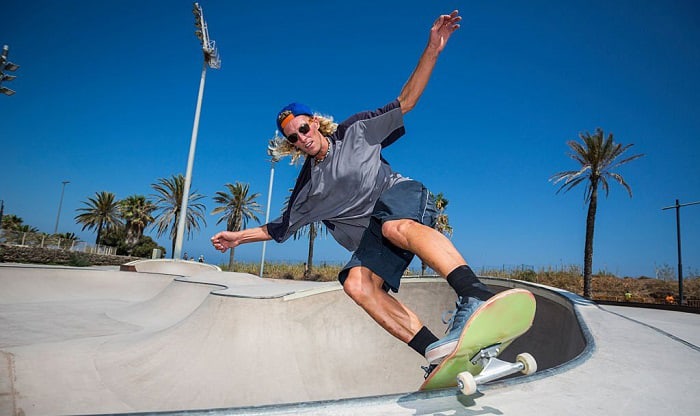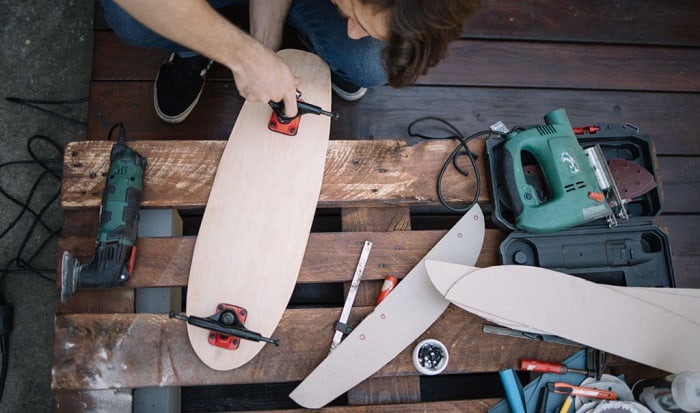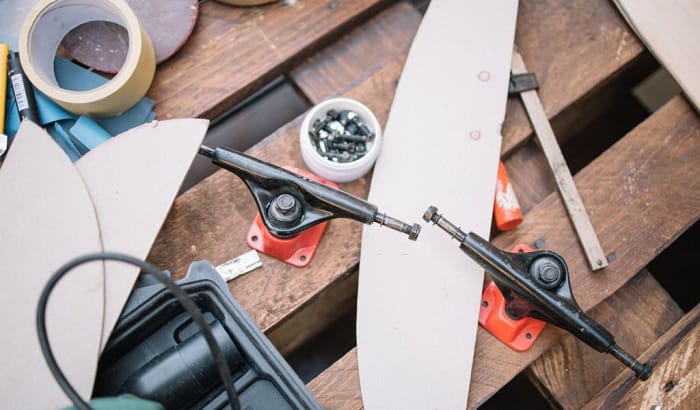In skateboarding, it’s not only our skateboard that functions. Our bodies also perform specific actions to make the board move. And like cars, every movement we make has a corresponding response from the gear.
If we lean, bend, and glide on a skateboard, more than one component receives our actions. But it’s the trucks that perform most of them. So, how do skateboard trucks work?
These are the steering components of a skateboard. Keep reading as I explore the truck’s parts that make it work as one unit.
Table of Contents
The Rationale Behind Skateboard Movements
When we turn a skateboard, we don’t get off the deck to point its nose in our desired direction. We only need to lean until the board changes paths. And as we shift our weight, the trucks flex within the configurations we set.
Similarly, our trucks work by supporting the deck’s pop during tricks. They help us stabilize when landing from ollies and control the skateboard better.
How Do Trucks Go on a Skateboard?
1. The kingpin is the truck’s ultimate support.
This component keeps the hanger secured to the baseplate. It works like a tightness adjustment tool that lets you turn it to tighten or loosen the trucks.
We’ll find loose trucks perfect for skateboard turning and carving. On the other hand, the tight ones offer more stability when riding at high speeds.
2. Bushings dictate the truck’s responsiveness.
Tricks make skateboard rides thrilling, and the bushings are a catalyst for them. These truck parts come in three hardness levels with their respective pros and cons.
- Hard bushings at 98a or higher – Bushings at this level are the most responsive. They work well for tricks and can be a perfect option for steering a skateboard.
- Medium bushings at 92a to 97a – These bushings are more balanced. They have the right mix of hardness and softness, and I think this aspect makes these an all-around option.
- Soft bushings below 92a – Soft bushings are generally ideal for cruisers. They serve as a guide for beginners, and with their softness level, they will not have a hard time turning in transition.
3. Pivot cups yield stability.
Skateboards with metal trucks or aluminum rely on these tiny components for critical reasons. Pivot cups are the element of strength between the baseplate and the hanger of the trucks. They prevent the trucks from being shaky or unstable.
Note that thin or wearing-out pivot cups can fall out. So, you might as well check them regularly to keep the trucks moving stably.
Do Skateboard Trucks Work With Longboards?
There’s no argument that standard kingpin trucks on skateboard work for street and park skating. But do they also work for longboards?
Yes, but not in all longboard decks. Standard kingpin skateboard trucks work for small longboard cruisers. They have a low height and are small in size, making them fit small longboards.
Conclusion
We always want our skateboards to be responsive, stable, and suited for our rides.
Also, we don’t want to compromise any skating aspect by missing out on quality parts and setups. That means we need to understand how each component functions to select better gear and give them appropriate maintenance.
So, how do skateboard trucks work? They respond to the directions our bodies give them. And whether they’ll turn sharply or respond to tricks will depend on the configurations we set up.

Hi, I am Charles Harris. I opened this site to write as much as I can about my biggest passion – skateboarding!
I started as a clumsy yet passionate rookie 10 years ago to now a still passionate yet much better skateboarder! But I have to tell you, the whole journey has always been fun and rewarding, indeed not without hardship.




